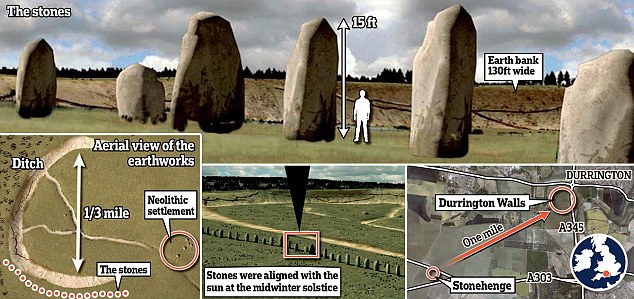Mike Parker Pearson's Stonehenge theory has taken a bit of a tumble with the discovery of 90 buried standing stones at Durrington Walls. He theorised that Stonehenge was a place of the dead (because of its stones) but Durrington Walls, which has massive earthen banks, was designed for the living. See www.dailymail.co.uk/news/article-3224523/Stonehenge-II-Radar-reveals-gre… … the science correspondent of the Daily Mail begins by saying Stonehenge has 'mystified and enraptured archaeologists and visitors' which probably says more about the journalist than anything else as Stonehenge has been untouched for several decades until recently when a small probe was undertaken. This lead to a wider project which involved modern geophys equipment – and the latest discovery, 90 stones up to 15 feet long and buried 3 feet deep, is part of that process – which avoids actually digging any holes. Therefore it is not clear if any of the stones will be excavated as simply knowing they are there is enough. In all likelihood they are local sarsen stones, as these are common to the geology of the chalk.
 It might be interesting to find out where or if they were dug out of the ground – or were they sarsens found on the surface.
It might be interesting to find out where or if they were dug out of the ground – or were they sarsens found on the surface.
It seems they were dismantled just before the henge was extended – and the deep ditch and high banks were dug out. The discovery was made public at the British Science Festival held at the University of Bradford. Vince Gaffney is based at Bradford (having moved from Birmingham University). He says they appear to have occupied a position on the slope, or along the scarp, of a dry chalk valley, and they were laid out in a C formation. Did the scarp provide a sky line which was the centre of focus?
The stones were toppled, we are told, and incorporated into the new henge. In other words, they were buried in a ritual act of closure – and the site was resurrected in a new formation. Like Stonehenge itself, the site was rebuilt – but nobody knows why that was. Something major must have happened to cause such a rejection of one form and the installation of something new. Archaeologists are of course 'mystifed' at what might have been going on, but the arrival of new people with a new focus may be one possibility. What is known is that there is, or was, a solar alignment (to midwinter or midsummer, depending on the point of view) but were they using the Sun to locate something else (at a particular moment or time of year)? Using the Sun to locate times of festivals (religious or traditional) is an accepted way of doing things. Even churches use alignments to the Sun in order to locate feast days. We may safely speculate that the role of the Sun during the Neolithic is somewhat overplayed. They may have been using the Sun to mark out the time of year but what they were really interested in may have been in the night sky.
